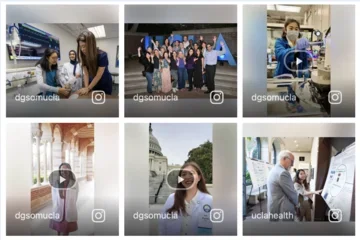Best Practices for Using Images on the Web Platform Healthsciences
Ensuring Compliance and Professionalism When Using Images on the Web Platform Healthsciences

This article addresses the following topics:
- Introduction
- Why Image Permissions Matter
- Guidelines for Sourcing Images
- Legal and Ethical Benefits of Using Authorized Images
- Best Practices for Using Images on the Web Platform Healthsciences
- Conclusion
- Additional Resources
Introduction
Images are a powerful way to enhance content on the Web Platform Healthsciences. High-quality, relevant visuals help communicate complex information, connect with audiences, and make content more engaging. It’s essential to approach image usage with care, ensuring all images are legally sourced, comply with copyright laws, and reflect UCLA’s professional standards. This guide covers the importance of obtaining permission for image use, sourcing images legally, and understanding our university’s copyright policies.
Why Image Permissions Matter
Using images without permission or proper licensing can lead to copyright infringement, exposing UCLA to potential legal issues, fines, and reputational damage. Additionally, images that don’t accurately represent the institution or are used without permission could mislead audiences or fail to meet the high standards expected in a medical and academic context. To avoid these risks, it’s crucial that all images used on our website are either university-owned, properly licensed, or sourced from reputable, copyright-free platforms.
Guidelines for Sourcing Images
To ensure compliance with copyright laws and maintain visual consistency across our digital platforms, follow these guidelines when selecting images.
- Use UCLA-Owned Images
The David Geffen School of Medicine (DGSOM) maintains a Box folder containing pre-approved images, and UCLA Health Marketing has a repository of images available upon request. These resources contain professional photos and graphics that represent UCLA faculty, students, campus scenes, research labs, and clinical settings. Using these images showcases our strengths while ensuring full rights to the visuals.
- Obtain Permission for External Images
If you find an image outside UCLA’s repositories that would be valuable for your content, seek written permission from the copyright holder before using it. This permission should clarify usage rights and ensure alignment with both UCLA requirements and the terms of the rights holder.
- Use Reputable Free Stock Image Sources
If UCLA-owned images aren’t available, use free stock image platforms like Unsplash, Pexels, or Pixabay, which offer a wide selection of high-quality, copyright-free images. Be sure to check licensing requirements on each website to ensure proper use.
- Avoid ‘Right-Click, Save’ Practices
Images found through search engines or on other websites may appear accessible but are likely copyrighted. Avoid copying or downloading an image directly from the internet unless it’s from a verified copyright-free or Creative Commons source because unauthorized use is copyright infringement.
Legal and Ethical Benefits of Using Authorized Images
Using approved, properly sourced images supports UCLA in several ways:
- Compliance with Copyright Laws
Adhering to copyright standards helps UCLA avoid legal repercussions and ensures that content aligns with academic and ethical practices.
- Consistent Branding and Professionalism
UCLA-approved images help maintain a consistent and professional appearance across the website. These images reflect our values, mission, and academic rigor, strengthening our reputation.
- Enhanced User Experience
High-quality images that genuinely represent UCLA promote trust and engagement among visitors, helping them form a positive impression of our programs, research, and community.
Best Practices for Using Images on the Web Platform Healthsciences
To streamline the image-selection process and ensure compliance, follow these best practices.
- Always Check Copyright and Licensing Information
Before uploading an image, confirm it’s either from an authorized source or follows copyright terms. Include any required attribution where applicable.
- Keep a Record of Permissions
When using an image that requires permission, be certain to keep documentation on file that details the usage terms and rights that have been granted. This record serves as proof of compliance if questions arise.
- Optimize Images for Web
To improve site performance and ensure accessibility, optimize images for web use. Add alternative text (alt text), which is a one- to two-sentence description of the image that accurately represents it for visually impaired users. For more guidance on image captions and alt text, please refer to our image captioning guidelines page.
- Use Web Platform Healthsciences Tools to Credit Images Properly
The Web Platform Healthsciences includes an image caption option for attribution. When using images that require attribution, fill in this field to provide proper credit. This practice respects the creator’s work and aligns with UCLA’s ethical standards.
Conclusion
Images play an essential role in creating an impactful and informative website for our medical university. By following copyright laws, sourcing images ethically, and using UCLA’s approved resources, we can protect the university from legal risks, uphold its reputation, and provide a visually engaging experience for site visitors. If you have questions, please consult our team by submitting a general support request, reviewing the Web Platform Healthsciences’s policies , or referring to UCLA’s guidelines on image use. For more detail on image composition and branding requirements, please see UCLA Health’s brand guidelines.
Additional Resources
Co-working Sessions
Register for the next Co-working Session for answers to your questions about this update.



